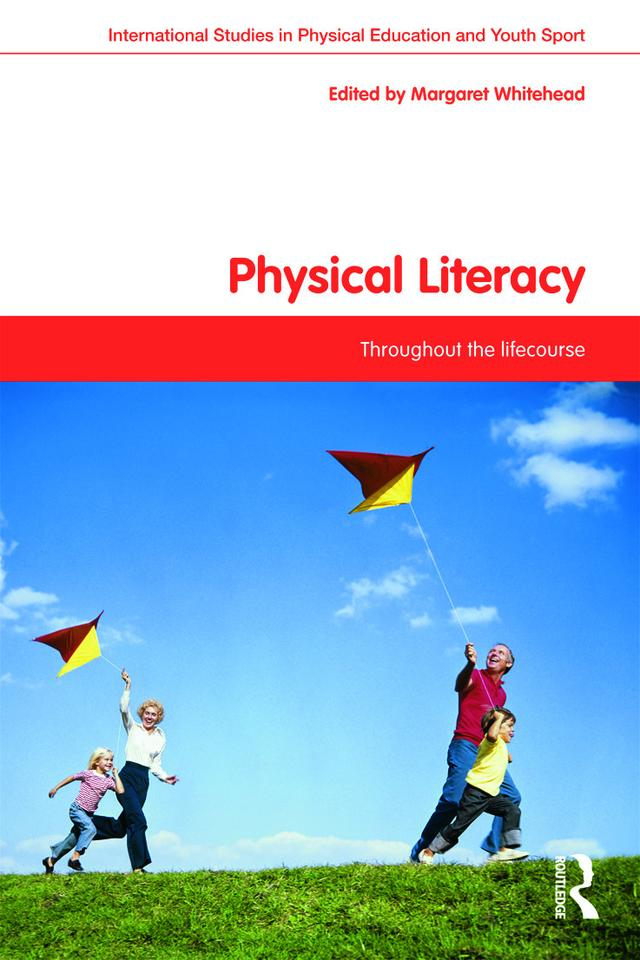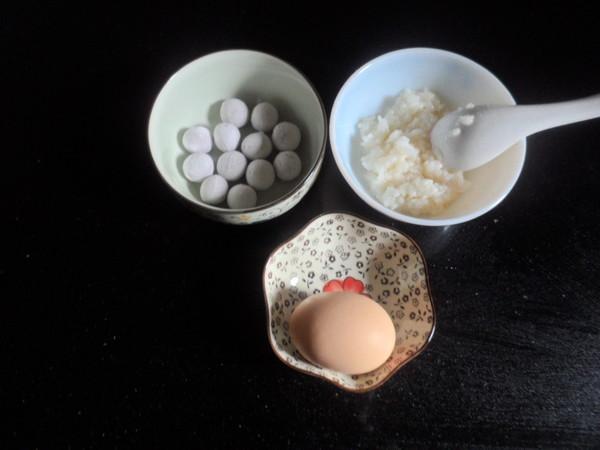近年来,身体素养(physical literacy)被描述为一个期待已久的概念,是一个统领当代体育改革与发展的理念。
身体素养的概念最初是由英国学者Whitehead提出的,目的是为了回应人们对体育教育的关注,以及人们在整个生命周期中令人担忧的身体活动水平不足问题。身体素养概念基于人的身体存在的哲学视野,重新诠释了人们对体育活动的理解方式,并将其置于个人身体潜能的整体发展之上。
这些理念似乎有着广泛的吸引力,作为全球多个国家的体育、健康、教育和娱乐等领域政策的发展目标,以一种更加明确的方式表达身体活动的重要性,更好地促进其公民的健康、生产力和幸福。随着我国《体育强国建设纲要》将身体素养作为体育强国的重要评价指标和青少年体育发展目标,对身体素养理论和实践的研究成为热点。
1993年,Whitehead首次提出“身体素养”的概念假设,将身体素养描述为“发展人与世界的清晰联系(the development of an articulate liaison with the world)”。

2001年,Whitehead发表文章“身体素养的概念(The Concept of Physical Literacy)”,勾勒出身体素养概念的基本框架,对身体素养的含义提出了更有说服力和更加全面的描述和解释。根据Whitehead(2001)的观点,身体素养的概念来源于一元论、现象学和存在主义等哲学概念,通过引入这些哲学立场,将身体素养转变为一种包容和整体的概念,关注世界中的个人及其经历。Whitehead认为身体素养的个人将拥有:
(1)对身体世界的独特解释;
(2)基于他们自己的经验和理解对世界的具身认知(embodiment within this world based on their own experiences and perceptions);
(3)他们的身心被视为一个不可分割、相互丰富的整体。

2010年,Whitehead出版了具有里程碑意义的著作——《Physical Literacy:Through a LifeCourse》。作者全面深入探讨了身体素养的概念、内涵、意义和哲学基础,将“身体素养”描述为个体终身保持适当的身体活动水平而发展起来的动力、信心、身体胜任力(physical competence)、知识与理解。倡导将其应用于从婴儿到老年的整个生命周期——人的终身之旅。它既反映了人们参加体育活动的愿望,也反映了人们通过体育活动获得有意义的、充实经历的愿望。身体素养不仅包括学校的体育教育或有组织的体育活动,它还提供了更广泛的与天赋无关的(unrelated to ability)身体活动概念。通过使用特殊的教学方法和采用新的思维方式,身体素养为更广泛的人群提供了更现实的身体潜能和胜任力(physical competence)以及身体活动模型,为每个人成为积极主动的参与者提供机会。
近年来,Whitehead和她的团队一致努力发展完善身体素养的定义。自1993年首次提出“身体素养”概念假设以来,Whitehead一直积极地寻求完善和改进“身体素养”的概念,通过其主导的国际身体素养协会(IPLA)寻求全球共识的努力。

最新IPLA网站「链接」上将身体素养被描述为动机、信心、身体胜任力、知识与理解,重视身体活动,将终身参与视为一种责任(Physical literacy can be described as the motivation, confidence, physical competence, knowledge and understanding to value and take responsibility for engagement in physical activities for life.IPLA, 2017)。尽管自2001年以来,这个定义已经被修改了4次,但Whitehead和她在IPLA的同事们始终保留了动机、信心、体能、知识和理解等要素。Whitehead的定义中另一个不变的观点是,身体素养贯穿人的整个生命历程。


虽然“身体素养”在全球范围内得到发展,但是在不同国家和组织(包括研究团队、政府组织(国家或州)、非营利组织和企业组织,或跨越所有这些领域的多部门伙伴关系)使用“身体素养”概念时,存在着不同的定义和解释。Shearer等人通过咨询多个身体素养相关专家学者、查阅文献和访问网络媒体平台,考察比较了已明确建立了身体素养发展计划或项目的七个政府或组织关于身体素养的定义,探寻它们之间的共识与分歧,建议相关使用身体素养概念的计划或项目,能够清晰和连贯地阐明他们对身体素养的定义和解释,从而产生了有意义的差异,这将有利于推动身体素养概念在世界范围内发展。但这也让那些将身体素养作为一个新概念来看待的人,在寻找一个明确的定义时,可能会感到困惑,因为身体素养仍是一个发展的概念。
- 国际身体素养协会:身体素养被描述为动机、信心、身体胜任力、知识与理解,重视身体活动,将终身参与视为一种责任。Physical literacy can be described as the motivation, confidence, physical competence, knowledge and understanding to value and take responsibility for engagement in physical activities for life.(International Physical Literacy Association, IPLA, United kingdom.)
- 英国威尔士:身体技能 信心 动机 充足的机会=身体素养。Skills Confidence Motivation Lots of opportunities = Physical Literacy(Sport Wales, United Kingdom)
- 加拿大蒙特利尔:具有身体素养的个体在多种环境多样的身体活动中能够胜任和自信的运动,促进完人的健康发展。Individuals who are physically literate move with competence and confidence in a wide variety of physical activities in multiple environments that benefit the healthy development of the whole person(Physical and Health Education, Montreal, Canada).
- 美国:具有身体素养的个体在多种环境多样的身体活动中能够胜任和自信的运动,促进完人的健康发展。Physical literacy is the ability to move with competence and confidence in a wide variety of physical activities in multiple environments that benefit the healthy development of the whole person(Society of Health and Physical Educators.USA).
- 新西兰:参与者具有的动机、信心、身体胜任力、知识和理解力,使他们能够重视并负责的去参与终身身体活动和运动。The motivation, confidence, physical competence, knowledge, and understanding required by participants that allows them to value and take responsibility for engaging in physical activity and sport for life(Sport New Zealand).
- 澳大利亚:将定义表述为4个方面:
(1)核心/过程:身体素养是在运动和身体活动环境中获得和应用的终身系统(全人)学习。
(2)内容/要素:它反应着集生理、情感(后来更名为“心理”)、认知和社会能力为一体的持续的改变。
(3)重要性:运动和身体活动在帮助我们过上健康而充实的生活方面至关重要。
(4)期望/结果:一个有身体素养的人能够利用他们综合的协调的身体、情感、认知、社会能力来支持健康促进和有意义的运动与身体活动——相对于个体的社会环境和文化背景。
Four defining statements: Core/process: Physical literacy is lifelong holistic learning acquired and applied in movement and physical activity contexts
Components/constructs: It reflects ongoing changes integrating physical, affective (subsequently renamed “psychological”), cognitive, and social capabilities
Importance: It is vital in helping us lead healthy and fulfilling lives through movement and physical activity
Aspiration/product: A physically literate person is able to draw on their integrated physical, affective, cognitive, and social capacities to support health promoting and fulfilling movement and physical activity—relative to their situation and context
[1] Durden-Myers E J, Whitehead M E. Operationalizing physical literacy: Special issue editorial[J]. Journal of Teaching in Physical Education, 2018, 37(3): 234-236.
[2] 任海. 身体素养:一个统领当代体育改革与发展的理念[J]. 体育科学, 2018, 38(3): 3-11.
[] Whitehead, Margaret, ed. Physical literacy: Throughout the lifecourse[M]. Routledge, 2010.
[3] Lundvall S. Physical literacy in the field of physical education–A challenge and a possibility[J]. Journal of Sport and Health Science, 2015, 4(2): 113-118.
[4] International Physical Literacy Association (IPLA). (2017). IPLA defini-tion. Retrieved from https://www.physical-literacy.org.uk/
[5] IPLA(2020) https://www.physical-literacy.org.uk/
[5] Sport Wales (2017) http://physicalliteracy.sportwales.org. uk/en/
[7] PHE Canada (2017)http://www.phecanada.ca/programs/ physical-literacy/what-physical-literacy
[8] CS4L (2017) http://sportforlife.ca/qualitysport/ physical-literacy/
[9] Mandigo et al. (2012) http://www.shapeamerica.org/events/ physicalliteracy.cfm
[10] Sport New Zealand (2015)
http://sportnz.org.nz/about-us/who-we- are/what-were-working-towards/ physical-literacy-approach
[11] Australian Sports Commission (2017) http://ausport.gov.au/physical_literacy
[12] Whitehead M E, Durden-Myers E J, Pot N. The value of fostering physical literacy[J]. Journal of Teaching in Physical Education, 2018, 37(3): 252-261.
,




